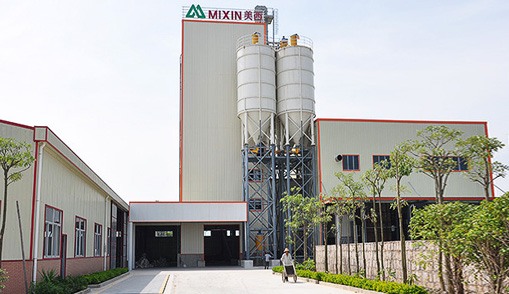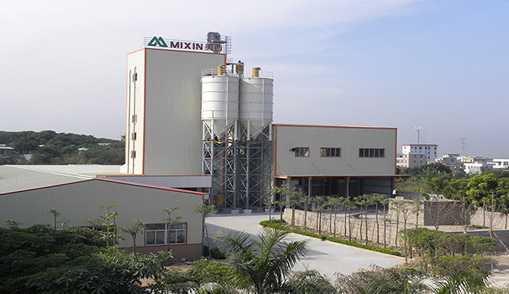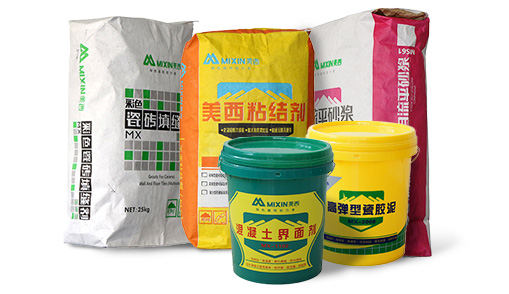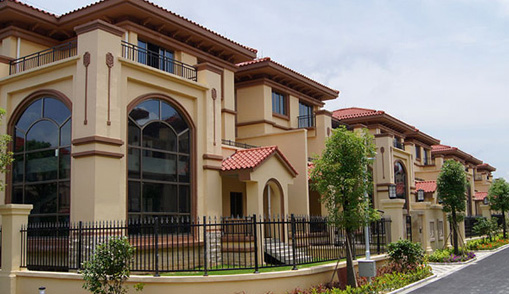The primer is an adhesive, generally made of vinyl acetate - ethylene. It has super strong adhesion, excellent water resistance and aging resistance. It can effectively avoid problems such as hollowing out, falling off, shrinking and cracking of plaster layer by improving the bonding strength of plaster mortar to the base layer. It can be used to deal with the surface of concrete, aerated concrete, gray sand brick and fly ash brick, etc. It can solve the problems of hollowing out, cracking and spalling of plaster layer caused by the strong or smooth water absorption of these surfaces and difficult interface bonding. It can greatly enhance the adhesion between old and new concrete and between concrete and plaster mortar. It can replace the traditional chiseling process on the surface of concrete and improve the plastering process on the surface of aerated concrete, and is an indispensable supporting material for modern building and decoration construction.
Primers are often used on concrete surfaces that are too smooth. By using this product, it is possible to replace the manual chiseling process by making the substrate surface rougher, increasing the adhesion to the substrate, and avoiding hollowing and crusting of the plaster layer. It has a strong penetrating ability, so it can fully infiltrate the surface of the incoming material and increase the adhesion of the new putty to the substrate. It can also be brushed directly onto the back of the ground material, depending on the material.
Classification of primers.
1) Dry powdered interface agent
Emulsion type interface agent (divided into one-component and multi-component): commonly used are VAE (vinyl acetate - ethylene copolymer emulsion) emulsion type interface agent, acrylic emulsion type interface agent.
Application range of the interface agent.
The primer is suitable for use on tiles, glass mosaics, polished tiles, glass tiles, marble, terrazzo, brushed stone, concrete, cement, mortar and other surfaces, and the application of the product on old paint surfaces should be determined by testing.
Application experience.
①First of all, the key is to know what kind of substrate to use, what construction method to take, and then choose what materials to use, there is not an interface agent formula will be used for everything. If you use a spatula to wipe (one-component common construction method), you do not have to worry about the interface agent is too thick, the amount of water added to the formula is generally low (about 25%), after wiping the interface agent is not dry, wipe the mortar immediately, the adhesion is the best; if you use a brush to apply the construction, you can not use coarse sand, add more glue powder, increase the water consumption (about 40%), but the cost will increase; there is spray gun construction.
②Coarse sand is stronger than fine sand for interface agent; if the quality of adhesive powder is not good, it is difficult to make interface hair-pulling effect.
③It is better to use two-component emulsion type interface agent (epoxy adhesive) and then two-component cementitious binder; it is not safe to use dry powder cementitious interface agent directly, because a little stress may make the whole piece fall off, and the cost is too high.
④The EPS board is usually glued directly to the wall with adhesive, but there are also interface agents that can be used according to the actual situation; usually the XPS board has a dense layer of skin on the surface and poor adhesion, so it is required to use a modified polymer emulsion interface agent (cement-based interface agent is cheaper, but sprayed onto the surface of the board). (After the powder phenomenon, not conducive to bonding, probably because the coating is too thin, water loss is too fast, the cement can not be fully hydrated), but if the bonding mortar is very good, with a rough surface of the extruded plastic board can also be used without interface agent.
⑤ XPS board emulsion interface agent with several kinds of emulsion and water on the mix, generally choose VAE emulsion, mix with water, the general water absorption rate of the grass-roots level to use less emulsion, water absorption rate of the grass-roots level to add more emulsion, and then add a small amount of defoamer, cellulose ether and the like, if you need to leave it for a period of time and then add some anti-mildew agent. If you need to leave it for a period of time, add some anti-fungal agent, etc. After mixing with cement mortar, it is also called interface agent, and can be used in other areas according to the actual situation. It is important to note that the amount of emulsion added should not be too concentrated, otherwise the film of the interface agent will have the opposite effect - the interface agent!









 粵公網(wǎng)安備 44051102000734號(hào)
粵公網(wǎng)安備 44051102000734號(hào)